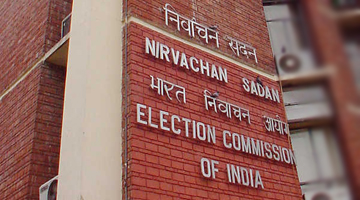+ the impugned provisions of the Finance Act, 1999 were enacted to overcome the decision of the Supreme Court in Eicher Motors Pvt Ltd (supra) and to sustain the lapse of the accumulated MODVAT credit in respect of the goods falling under the specified headings.
+ the only ground on which the Supreme Court held that Rule 57F(4A) could not be applied to MODVAT credit already accumulated with the manufacturers was that the same would affect the rights of parties which had crystallised and the Central Government was not empowered to frame any subordinate legislation for taking away the said accrued rights. Indisputably, the said defect has been cured inasmuch as the Parliament has by Section 131 of the Finance Act, 1999 specifically empowered the Central Government to frame Rules for lapsing of accumulated credit on a specified date. Thus, if we assume - for the purposes of considering the challenge to the retrospective affirmation of Rule 57F(4A) of the Rules - that there was no defect in Rule 57F(4A) at the time when it was initially made except that the Central Government lacked the power to do so, it is at once clear that the challenge to Section 132(2) of the Act is without merit.
+ this is so, because it is now well settled that the legislature can enact laws to operate retrospectively and enforce an earlier invalid legislation provided:(i) the defect for which the earlier legislation had been invalidated is cured; and (ii) the legislature has the legislative competence over the object of the legislation. It is well established that to legislate on the object within the field of the legislative competence and to enforce the legislative policy - including by way of a retrospective legislation - is a perfectly permissible exercise of legislative power.
+ there are numerous decisions of the Supreme Court and High Courts where the Courts have rejected the challenge to validating acts which retrospectively validate a levy that has been struck down by the Courts. It is now well established that the legislature can frame laws retrospectively within the field of their legislative competence. It is also well established that validating acts which cure the defect that invalidated an earlier legislation cannot be impugned as being unreasonable solely on the ground of their retrospective operation (except, of course, where the period of retrospective operation is itself unreasonable and unjustified).
+ by virtue of Section 131(b) of the Finance Act, 1999, the Parliament had cured the defect on account of which Rule 57F(4A) had been read down. There is no dispute as to the legislative competence of the Parliament to enact such law. The provisions of Section 132(1) (a) and Section 132(2) of the Finance Act, 1999 are only directed to sustain Rule 57F(4A) as originally enacted. Thus, in our view, the challenge laid by the Petitioners insofar as the aspect of the retrospective operation of the impugned provisions to the extent that Rule 57F(4A) is validated, cannot be sustained.
+ a plain reading of Rule 57F(4A) indicates that the operation of the said Rule is inherently retrospective inasmuch as its effect is to lapse MODVAT credit which has been accumulated by the Petitioners on account of payment of Excise Duty in respect of goods which have already been utilised for manufacture of finished goods that have been cleared.
+ it is now well established that tax legislations - like any other legislation are not immune from being assailed on the ground of being unreasonable and offending Article 14, 19(1)(f) and 19(1)(g) of the Constitution.
+ thus, while it is recognised that the powers of the State to levy tax and enact fiscal laws are wide, the laws framed cannot be so irrational as to fall foul of Article 14 or 19(1)(g) of the Constitution. Particularly, in cases such as the present one, where the benefit of the scheme on the basis of which the Petitioners had already acted is sought to be withdrawn, the enactment has to be justified on some rational basis.
+ retrospective statutory amendments made to cure certain defects and to validate a law held to be invalid or retrospective amendments which are clarificatory in nature, stand on a completely different footing. They are materially different in their nature from legislative amendments which introduce substantive changes with retrospective effect and thereby introduce a levy for the first time from an anterior date and the legislations which have the effect of withdrawing benefits granted and availed of in the past. Such legislations would have to be justified on rational basis and in absence of good reasons, would be liable to be declared as falling foul of the Constitution of India.
+ to summarise, the legal position as now well established is that a legislature has the power to enact laws both prospectively as well as retrospectively. In the case where the legislature enacts laws for curing defects to validate an earlier enacted invalid law, or to clarify an earlier legislation, the same would not be unconstitutional solely for the reason that the said laws have been enacted with retrospective effect. However, in cases where a law is enacted to impose a fresh levy with retrospective effect or to take away a benefit granted under an earlier law, the same is required to be justified on rational reasons.
+ if we look into the surrounding circumstances and the context in which Rule 57F(4A) was initially made, it is clear that the same was a part of rationalizing the Excise Duty structure. It is important to note that the Excise Duty structure existing prior to 1996 had resulted in the manufacturer paying a higher rate of excise duty on inputs as compared to the finished products; the duties payable on inputs was ranging from 20 to 25% while that of the finished product was 10 to 15%. The aforesaid duty structure coupled with the fact that manufacturing of the LCVs did not result in sufficient value addition to absorb the duties payable on the inputs, had resulted in accumulation of MODVAT Credit.
+ MODVAT scheme as introduced worked on the principle that the duty paid inputs had a co-relation with the finished products even though such co-relation was not of a kind that required the very same input to be used in the final product. It was clarified by the department in that sense that there was no one to one co-relation between duty paid on the inputs and the output. However, it was also clear that the duty paid on inputs was not available as a credit in respect of duties on any other excisable finished product. If this restriction was continued and the duty structure was not rationalised for higher duties (in absolute terms) then the duties paid on the inputs that resulted in the accumulated credit available with the Petitioners would remain as such and would be of no benefit to them (unless they changed their business model). Thus, although, the Petitioners had an accrued right in respect of duty paid by them, such right was limited and the Petitioners were not entitled to claim refund of such duties.
+ it is in the aforesaid context that the Central Government decided to rationalise the structure of excise duties and Rule 57F(4A) was an integral part of this rationalisation. One limb of the rationalisation was to reduce the duties paid on the finished product; this would ensure that the duties paid on inputs would be fully absorbed towards duties on the finished product. The second limb was to provide flexibility in use of the MODVAT credit available on account of payment of duties on raw material/input; such duties could now be used towards discharge of finished products other than those in respect of which such raw material/inputs were used/intended to be used. The manufacturer was now no longer constrained to use this credit only towards the duties of the finished products manufactured by use of such inputs/raw material in respect of which the duty credit was available. The third limb was to start afresh and lapse the accumulated credit; Rule 57F(4) which provided for elapsing of credit was, thus, the third limb of this rationalisation. It is apparent that the Central Government did not want the accumulated credit to further reduce the collection of revenues.
+ it appears that in their wisdom, the Central Government sought to balance the rationalisation of duty structure and provide flexibility in the use of credit by lapsing the accumulated credit which was admittedly a product of the earlier duty structure.
+ viewed from the aforesaid perspective, we are unable to hold that the making of Rule 57F(4A) was so irrational or unreasonable as to fall foul of the Constitution of India. As to how, a fiscal legislation is to be framed is not an area where any interference under Article 226 is warranted.
+ scope of judicial review in respect of fiscal legislation is limited to the extent of determining whether it is outside the legislative competence of the legislature to enact such legislation and/or whether such enactment is so unreasonable and irrational so as to violate the rights guaranteed under the Constitution.
+ in the present case, we are unable to accept that the legislative policy in aid of which Rule 57F(4A) was made is irrational or unreasonable. The fact that the Petitioners would have to bear additional burden can clearly not be a ground to challenge the legislative policy.














